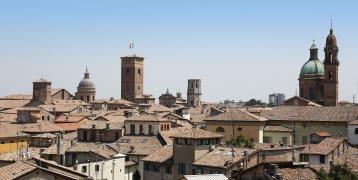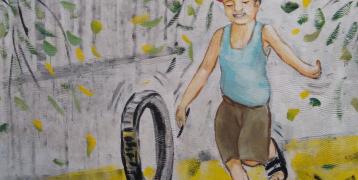Temporary use of abandoned spaces to boost innovation, creativity and sustainability
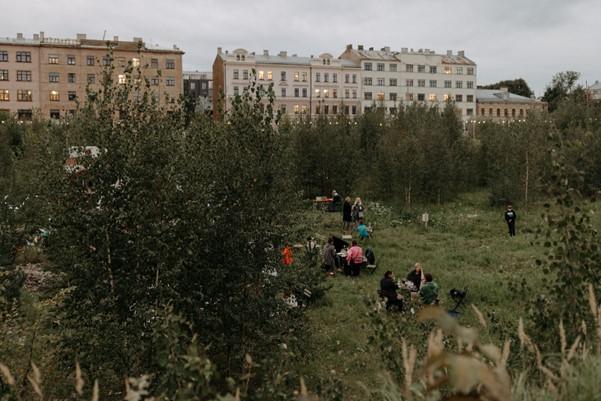
Cities are home to over two-thirds of the EU's population, generate up to 85% of Europe's GDP and account for about 80% of energy use. European cities face challenges ranging from environmental degradation and climate change to the digital revolution, from demographic transition and migration to social inequalities. Cities are changing faster than ever before, so much that many buildings and infrastructures become under-used or empty since they are no longer able to serve their users’ needs.
Temporary uses refer to the practice of using vacant buildings, empty lots, and unused spaces as sites for co-creative experimentation, unlocking a multitude of innovative cultural, social, and entrepreneurial activities. They are testbed for innovating urban governance and promoting the empowerment of local actors, such as grassroots citizens' organisations and SMEs. Many spaces are left empty by owners because they currently do not have plans, capital for renovation, or cannot sell or rent the space at a desired price. Instead of leaving such spaces empty, they offer them to be temporarily used.
Inspiration from Riga
One of the IMPETUS project partners, the City of Riga, has a number of examples of temporary use projects. As a post-industrial city that has undergone a radical economic restructuring over the last 30 years, Riga still has large areas of degraded and abandoned space, or urban areas reserved for long-term future development. “The Sustainable Development Strategy of Riga 2030” sets out the ambition for Riga “to become a compact, resource-saving, and smart city with the highest quality of life”. One of the Strategy’s development priorities includes “to assess the potential of temporary use of abandoned and underserved urban areas” and to promote and maximise their use through public participation.
According to Latvia’s legislation, it is prohibited to give a public property for use to a private individual, company, or other entity, except social enterprises or public benefit organisations without fair compensation. “In Latvia and Riga there are significant restrictions on transferring public sector property (buildings, land, infrastructure) for temporary use. We have all those nice success stories, all of which are private sector initiatives”, says Ilze Purmale, the Director of the Development department at the Riga City Council. The City tries to support these projects via different types of funding for bottom-up activities, working hand in hand with Free Riga.
“An important actor in temporary use is a non-governmental organisation Free Riga, which undertook numerous temporary use projects. They started in 2008, during the economic crisis, when people realised there are many empty buildings in the city. The municipality has always tried to support and collaborate with the NGO, to act as a guide, support their temporary use projects and to make the abandoned places safe”, explains Purmale.
The city has not made any register of empty buildings available for temporary use so far. There are, however, various databases that can be used to map empty buildings. Riga’s supply of empty buildings, land and technical structures that could be given for temporary use, exceeds the demand, because of declining population.
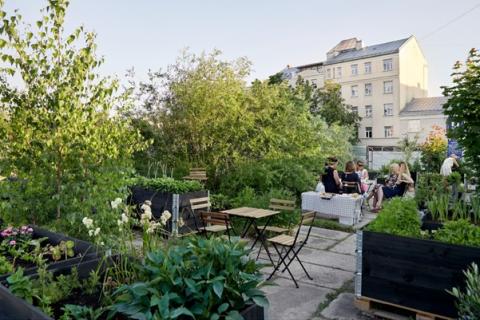
“Free Riga specifically mapped empty buildings several years ago, but the map is not regularly updated. We would like to establish a contact point and map the supply and demand of places with potential for temporary use. In the near future we will also look for places where we could produce renewable energy on temporarily used spaces, most likely starting with one part of the city/one neighbourhood first” elaborates Purmale on future plans.
Sports Palace Gardens
Since gardening and growing vegetables is a very popular activity among Latvians, it comes as no surprise that one of the projects concerns urban gardens. “Sporta pils dārzi” (“Sports Palace Gardens”) is an initiative organised by active residents. In 2020 this initiative opened a former soviet sports centre (a privately owned property that had been abandoned and closed to residents) and put it into public temporary use.
The territory was adapted to the needs of urban gardening and today the place holds 150 garden spaces, as well as mobile gardening boxes of different sizes and heights to make them easily accessible to everyone including people with disabilities, children, and seniors.
Wildflower meadows and recreational zones are located in the central part of the compound and were available to local residents, gardeners, as well as to the wider public free of charge – for picnics, events, lazy afternoons and community activities. Since the owner started some development works in a part of the area, the space can no longer be used for public events, but the garden plots are still there.
One of the initiative’s key priorities is to make this place as accessible as possible in all senses – financial, social, physical, etc. The rental costs of the garden plots are low, thus attracting a wide range of interested parties. When evaluating candidates for gardening, preference is given to seniors, minorities and those who live nearby.
Institute of Design for Quality of Life and temporary landscaping
Another temporary use project worth mentioning is the “Institute of Design for Quality of Life”. A former Faculty of Mechanical Engineering, Transport and Aeronautics of Riga Technical University (RTU) has been turned into the largest creative building in Riga (15000 square metres) and its rooms are used for workshops, offices, studies, classes, groups, warehouses, concerts, events, conferences, seminars, lectures, and outdoor events. In the long term, the “Institute of Design for Quality of Life” should become an international social innovation platform.
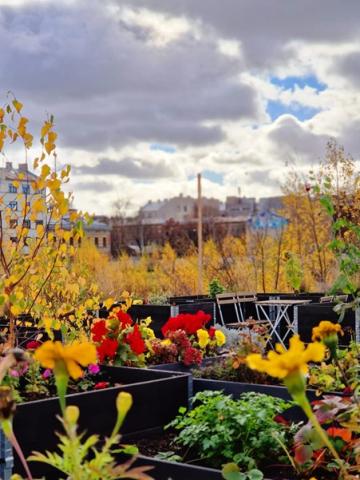
The last example is an initiative led and developed by the Riga City Council, an experiment aiming to humanize urban environment until more permanent solutions are implemented. It includes greening public spaces, making them more pedestrian-friendly, and diversifying their use. Small-scale, public space temporary improvement projects are implemented every summer in various locations.
2020 saw the launch of a pilot project – Tērbatas Street (aka “Summer Street”) in Riga’s historic centre. Usually full of cars and with almost no trees, the street was for a month turned into a pedestrian zone with greenery, where various activities could take place. In the following years, temporary public space improvements tended to disperse throughout the city, became smaller and took place during summer.
According to Purmale, there are still several barriers to temporary use. “First of all, it is legislation and a lack of incentives. For example, a special tax scheme could be implemented, under which the owner giving up space for temporary use could get a tax benefit. Various other funding schemes would be helpful, as would be centralised information (website, local contact point) and awareness raising campaigns. Further, the issues of safe operation of abandoned buildings and land must be of highest priority, when considering their temporary use”.
At the same time, to support temporary use in cities, it is immensely important to “encourage the private sector and active social actors to locate and use empty spaces. Have a methodology in place to define which areas could be used for which purpose,” advises Purmale. For example, the “Free Riga” NGO performs an in-depth assessment of the building itself, as well as of the local communities around it, prior to implementing any inhabitation initiatives.
They survey local needs, missing cultural amenities or social services. During the implementation of each initiative, “Free Riga” also motivates local communities to join and/or support the cause or take an advantage of the numerous benefits it offers.

